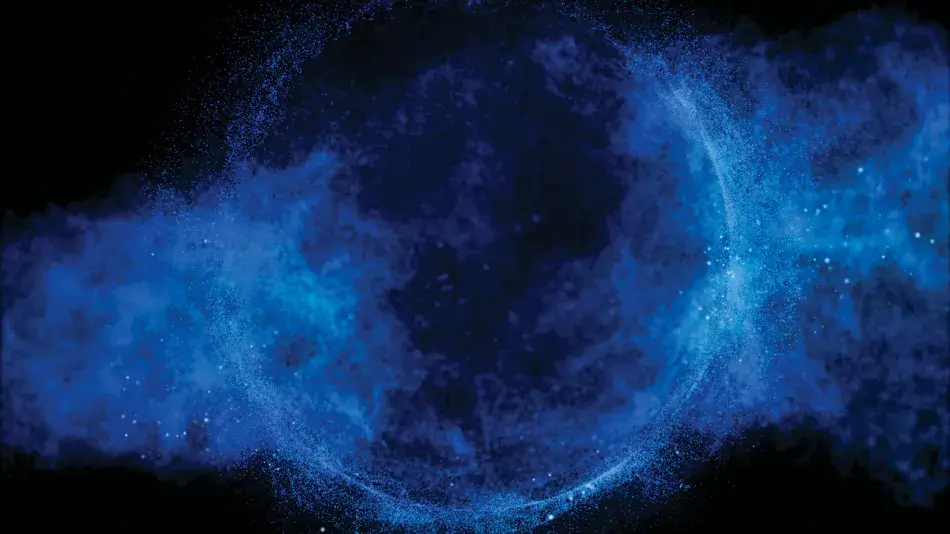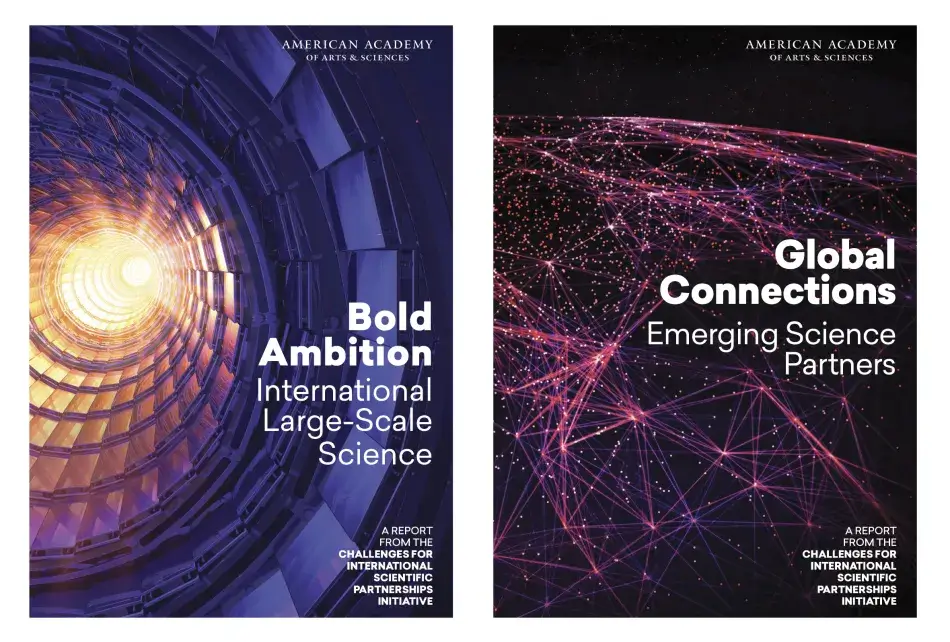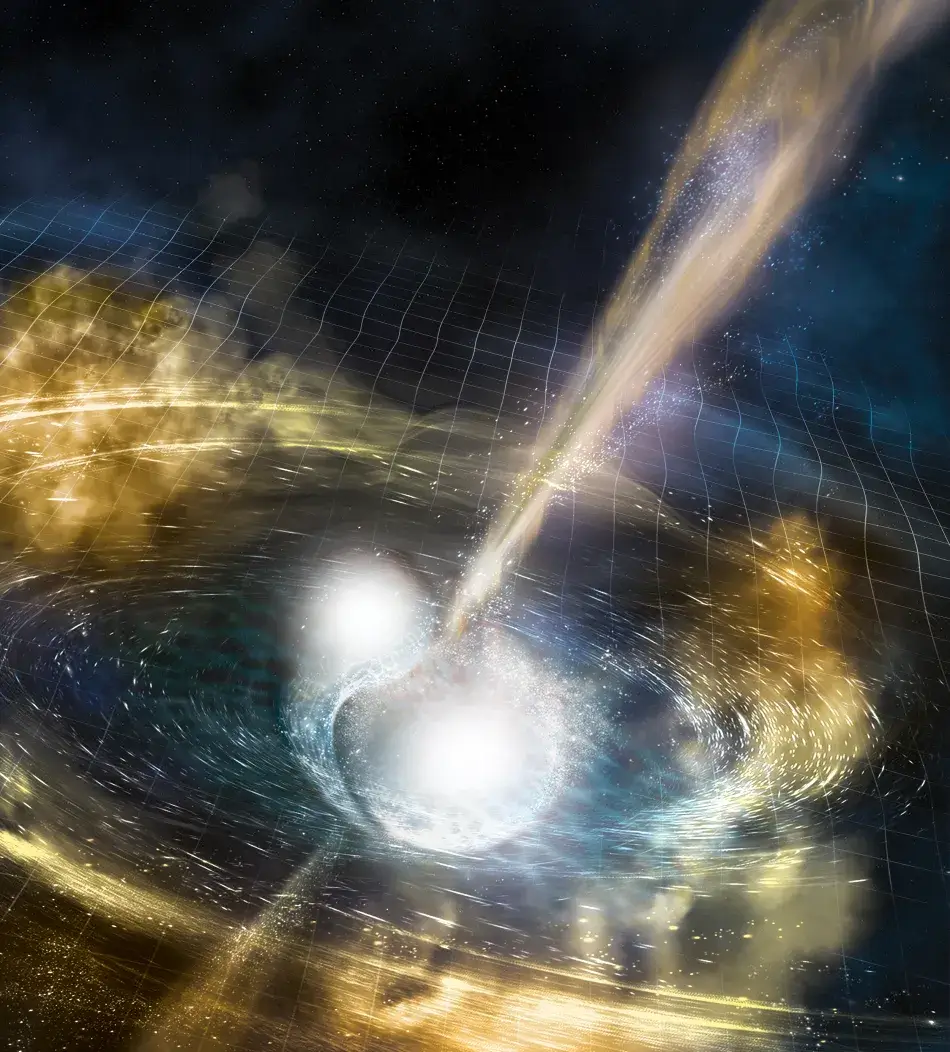
Global challenges, like the COVID-19 pandemic, underscore the value of international coordination and collaboration. In the case of pandemics, this need comes into play not only in managing and mitigating the spread of the disease, but also in the development of treatment therapies and vaccines. Indeed, the first COVID-19 vaccine approved by the U.S. Federal Drug Administration in December 2020 arose from an international collaboration between U.S. and German-based biotech companies, each led by immigrants from Greece and Turkey, respectively.
The American Academy’s initiative on Challenges for International Scientific Partnerships began before the world knew about the SARS-CoV-2 virus and was designed with the understanding that the world would face such global challenges. Since launching in 2018, the initiative, cochaired by Arthur Bienenstock (Stanford University) and Peter Michelson (Stanford University), has engaged with scientists and policy-makers from around the world and consulted numerous leaders, administrators, and representatives of U.S. federal agencies, scientific societies, and international governments. Overseen by leading U.S. and international scientists and science policy experts, the project’s work is concentrated in two areas: 1) the establishment of principles for U.S. participation in large-scale scientific endeavors, including large-scale facilities and distributed networks, and 2) the development of recommendations to strengthen and build equity in U.S. collaborations with emerging science partners, including partners in the Global South. The findings of the working groups in these two areas will be presented in two forthcoming reports to be published in 2021.

A newly released report from the initiative, America and the International Future of Science, bridges these two working groups by articulating the importance of international scientific collaboration across disciplines and at all scales. Once the dominant funder of science in the world, the U.S. share of research and development (R&D) funding is diminishing as more countries invest in science. Additionally, this expanding global investment indicates that the best scientific talent and partners may be increasingly located in other countries than the United States. As U.S. scientists seek to produce the best possible science, the United States should strongly consider investing in R&D and approving policies that facilitate, support, and foster its scientists in collaborating internationally.
In line with these observations, the report identifies six imperatives for international collaboration:
- the global nature of scientific questions;
- competition for global talent;
- U.S. economic competitiveness;
- U.S. national security;
- funding realities, particularly for large-scale science projects; and
- the development and application of international ethical norms and scientific guidelines.
Drawing on historical and current examples of scientific collaboration and discovery, America and the International Future of Science offers a sweeping look at the various ways that science has benefited the United States and its citizens and presents an appeal to U.S. federal agencies and policy-makers to continue prioritizing U.S. leadership of, participation in, and commitment to international scientific endeavors.
Among the many examples of collaboration highlighted in the report is that of the Laser Interferometer Gravitational-Wave Observatory (LIGO), which was designed to detect gravitational waves predicted by Einstein’s General Theory of Relativity. On September 14, 2015, the U.S.-based LIGO detectors in Louisiana and Washington made the first observation of a burst of gravitational waves – coming nearly one hundred years after the publication of Einstein’s theory that predicted the existence of both black holes and of gravitational waves. Two years later, on August 17, 2017, LIGO and its European counterpart, Virgo, detected gravitational waves from the collision of two neutron stars–an event anticipated for decades (see image below). These discoveries provided information to solve decades-old mysteries and unproven theoretical speculations in the astrophysical sciences, an accomplishment that could not have occurred without internationally based facilities and massive collaboration with scientists from around the world.

The report also looks at key challenges facing the United States that demand continued investment in international scientific endeavors, especially those regarding economic and national security concerns. These challenges include, for example, ensuring continued global surveillance and vigilance of emerging infectious diseases; responding to the impacts of climate change, including issues of water and food security; and utilizing science to promote diplomacy despite strained international relations. In a special section, the report offers recommendations for the United States to balance and manage wisely both collaboration and competition with China (see sidebar: The Perils of Complacency). The report calls for robust scientific collaboration between American and Chinese researchers, including through visa policies that would encourage Chinese nationals to study and reside in the United States, while ensuring adherence to domestic university policies.
The Perils of Complacency
In recent years, China has increasingly invested in its R&D enterprise, and its science and technology (S&T) funding levels are rapidly approaching those of the United States. Meanwhile, the United States has not meaningfully increased its own spending on R&D in decades. A new report, The Perils of Complacency: America at a Tipping Point in Science & Engineering, released in September 2020 by the American Academy in partnership with Rice University’s Baker Institute for Public Policy, surveys and compares the S&T landscapes of China and the United States. The report focuses on four key ingredients of innovation: human capital, knowledge capital, innovation ecosystems, and financial capital. The report finds that China is increasingly making strides in its domestic R&D, and that if the United States is to remain competitive, it must increase its own investment and significantly strengthen its S&T enterprise.
The Perils of Complacency is available on the Academy’s website and print copies are available upon request.
America and the International Future of Science was released on December 14, 2020, at an event that featured project cochairs Arthur Bienenstock and Peter Michelson in conversation with Shirley Malcom (American Association for the Advancement of Science). The discussion was moderated by Olufunmilayo Olopade (University of Chicago). Malcom and Olopade are members of the initiative’s steering committee and cochairs of the project’s working group on collaborations with emerging science partners.
In the coming months, the project will be engaging in strategic outreach with key audiences that include the incoming presidential administration, congressional supporters of a strong U.S. scientific enterprise, and groups working to develop careful policies regarding U.S.-China scientific collaboration. Through this engagement, the Academy plans to convey the report’s findings as well as lay a strong foundation for continued discussions upon the release of the initiative’s two forthcoming publications.
Challenges for International Scientific Partnerships is generously funded by the Alfred P. Sloan, William and Flora Hewlett, and Gordon and Betty Moore Foundations. America and the International Future of Science is available in full online and print copies are available upon request.